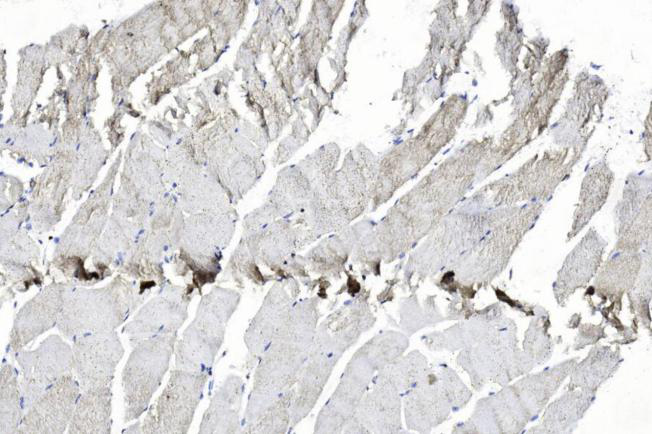
| WB | 咨询技术 | Human,Mouse,Rat |
| IF | 咨询技术 | Human,Mouse,Rat |
| IHC | 1/100-1/500 | Human,Mouse,Rat |
| ICC | 技术咨询 | Human,Mouse,Rat |
| FCM | 咨询技术 | Human,Mouse,Rat |
| Elisa | 咨询技术 | Human,Mouse,Rat |
| Aliases | BDPLT22, CAPB, DRT, EK5, EPHT3, ERK, Hek5, PCBC, Tyro5 |
| Entrez GeneID | 2048 |
| WB Predicted band size | 117.5kDa |
| Host/Isotype | Mouse IgG1 |
| Antibody Type | Primary antibody |
| Storage | Store at 4°C short term. Aliquot and store at -20°C long term. Avoid freeze/thaw cycles. |
| Species Reactivity | Human |
| Immunogen | Purified His-tagged EPHB2 protein(Fragment, between amino acids 127~425) was used to produce this monoclonal antibody. |
| Formulation | Purified antibody in TBS with 0.05% sodium azide. |
+ +
以下是3篇关于EPHB2抗体的参考文献及摘要概括:
---
1. **文献名称**:*EPHB2 receptor tyrosine kinase promotes hepatic carcinogenesis in mice via stimulation of CTNNB1 activity*
**作者**:Chen J. et al.
**摘要**:该研究利用特异性EPHB2抗体进行免疫沉淀和Western blot分析,发现EPHB2通过激活β-catenin(CTNNB1)信号通路促进肝癌进展,抗体在实验中用于检测蛋白表达及相互作用。
---
2. **文献名称**:*Targeting EPHB2 with monoclonal antibodies suppresses colorectal tumor growth*
**作者**:Dunne P.D. et al.
**摘要**:研究团队开发了一种人源化抗EPHB2单克隆抗体,通过体内实验证明其可抑制结直肠癌细胞增殖并诱导凋亡,抗体被用于阻断受体活性并评估治疗效果。
---
3. **文献名称**:*EPHB2 regulates neuroblastoma cell differentiation via interaction with NCAM*
**作者**:Holmes K.M. & Smith F.M.
**摘要**:通过免疫荧光和共聚焦显微镜技术(使用EPHB2抗体),揭示了EPHB2与神经细胞黏附分子(NCAM)的互作在神经母细胞瘤分化中的调控机制。
---
如需获取全文链接或补充其他领域研究,可进一步说明。
The EPHB2 antibody is a tool used to detect and study the Ephrin type-B receptor 2 (EPHB2), a member of the Eph receptor tyrosine kinase family. EPHB2 plays critical roles in cell-cell communication, particularly during developmental processes such as axon guidance, angiogenesis, and tissue boundary formation. It interacts with membrane-bound ephrin-B ligands to regulate bidirectional signaling, influencing cell adhesion, migration, and spatial organization. Dysregulation of EPHB2 is implicated in cancer, neurodegenerative diseases, and developmental disorders. For instance, EPHB2 acts as both a tumor suppressor and promoter depending on context, modulating pathways like Wnt/β-catenin and RAS-MAPK.
EPHB2 antibodies are designed to target specific epitopes within the receptor’s extracellular ligand-binding domain, cytoplasmic kinase region, or phosphorylated tyrosine residues. They are widely utilized in techniques like Western blotting, immunohistochemistry, and flow cytometry to assess protein expression, localization, and activation status. Commercially available clones vary in species reactivity (human, mouse, rat) and applications, with some optimized for functional blocking or detecting post-translational modifications. Research using EPHB2 antibodies has advanced understanding of its roles in neural circuit formation, tumor metastasis, and stem cell regulation. Validation via knockout controls or peptide competition ensures specificity, making these antibodies essential for exploring EPHB2’s biological and pathological mechanisms.
×